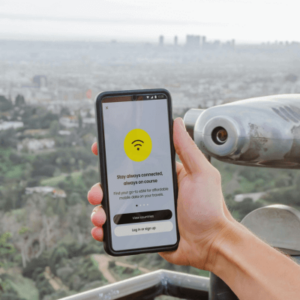Transferring your eSIM between devices can seem daunting if you’re unfamiliar with the process. This comprehensive guide will walk you through the necessary steps to ensure a smooth transition, highlighting the key aspects of eSIM technology, its benefits, and the practical steps to follow.
What is an eSIM and How Does it Work?
Before delving into the transfer process, it’s essential to understand the fundamentals of eSIM technology. An eSIM is a digital SIM that allows you to activate a cellular plan from your carrier without using a physical SIM card. It’s integrated into your device’s hardware, offering several advantages:
- Convenience: No need to swap out physical SIM cards.
- Flexibility: Easily switch carriers or plans without waiting for a new SIM card.
- Multiple Profiles: Store multiple numbers and carrier profiles on a single device and switch between them as needed.
For more details on how eSIM technology is revolutionizing connectivity, visit our How it Works page.

Benefits of Using eSIM Technology
eSIM technology offers numerous benefits beyond just eliminating the hassle of physical SIM cards. Here are some key advantages:
- Remote Provisioning: Activate your eSIM remotely without visiting a store or waiting for a physical SIM card to arrive.
- Enhanced Security: eSIMs are less prone to physical damage or theft compared to physical SIM cards.
- Space-saving Design: The elimination of a physical SIM slot allows manufacturers to design smaller and more compact devices.
- Global Connectivity: Easily switch between different carriers while traveling internationally without changing SIM cards. Explore the countries with eSIM availability and how it can benefit your travels.
Stay connected seamlessly in the USA, Canada, and Japan with an eSIM from terminalesim.com! Click here to start saving and enjoy an exclusive 10% discount by using the coupon code TERMINAL10 at checkout. Don’t miss out – claim your eSIM today and stay connected effortlessly!
Preparing to Transfer Your eSIM Between Devices
To ensure a seamless transfer of your eSIM from one device to another, proper preparation is crucial. Here are the steps you should take before initiating the transfer:
-
Check Compatibility: Ensure that your new device supports eSIM functionality. Not all devices are equipped with the necessary hardware. Visit our Help Center for a list of compatible devices.
-
Backup Data: Back up all important data on your current device. This includes contacts, messages, apps, and any other essential information.
-
Update Software: Make sure both the old and new devices are running the latest operating system updates. This can prevent compatibility issues during the transfer process.
-
Note Down Details: Write down your eSIM activation code or QR code provided by your carrier. You’ll need this information during the transfer.
-
Inform Carrier: Some carriers may need to be informed about the device change. Check with your carrier to see if this step is necessary.
COVERAGE United States
DATA 1 GB
VALIDITY 7 days
US $5.00
Buy now!COVERAGE Spain
DATA 1 GB
VALIDITY 7 days
US $4.50
Buy now!Step-by-Step Guide to Transferring Your eSIM Between Devices
Step 1: Deactivate eSIM on Current Device
- Go to Settings: Open the settings menu on your current device.
- Select Cellular or Mobile Data: Navigate to the cellular or mobile data section.
- Find eSIM Profile: Locate your eSIM profile and select it.
- Remove or Deactivate: Follow the prompts to remove or deactivate the eSIM profile from your current device.
Step 2: Activate eSIM on the New Device
- Open Settings: On your new device, open the settings menu.
- Select Cellular or Mobile Data: Navigate to the cellular or mobile data section.
- Add Cellular Plan: Choose the option to add a new cellular plan.
- Scan QR Code: Use the camera to scan the QR code provided by your carrier, or manually enter the activation code.
- Complete Activation: Follow the on-screen instructions to complete the activation process. Your new device should now be connected to your cellular network using the eSIM.
Troubleshooting Common Issues When Transferring Your eSIM Between Devices
Despite your best efforts, issues can sometimes arise during the eSIM transfer process. Here are some common problems and their solutions:
-
eSIM Not Activating on New Device: Ensure that your new device is compatible with eSIM technology. Double-check your activation code or QR code for any errors. Restart your device and try the process again. If the issue persists, contact your carrier for assistance.
-
Loss of Data Connection: Verify that your new device has the latest software updates installed. Re-check your eSIM settings to ensure they are correctly configured. Reset network settings on your device and re-enter your eSIM details if necessary.
-
Carrier Restrictions: Some carriers may restrict the transfer of eSIMs between devices. Contact your carrier to confirm whether additional steps or permissions are required for the transfer.
Verifying the Successful Transfer of Your eSIM Between Devices
Once the transfer process is complete, it is crucial to verify that your eSIM is functioning correctly on your new device:
- Check Network Connection: Ensure that your device shows a signal from your carrier and that you can make calls, send texts, and access mobile data.
- Test Data Speed: Run a speed test to confirm that your data connection is working as expected.
- Access Voicemail: Test your voicemail to ensure it’s properly set up on your new device.
- Verify Carrier Settings: Go to your device settings to verify that all carrier-specific settings have been correctly applied.

Frequently Asked Questions About eSIM Between Devices
Many users have questions about transferring their eSIMs between devices. Here are some frequently asked questions and their answers:
-
What Happens to My Physical SIM Card When I Use an eSIM?
Your physical SIM card remains unaffected when you activate an eSIM. You can still use the physical SIM card on another device or keep it as a backup. -
Can I Have Multiple eSIMs on One Device?
Yes, many modern devices support multiple eSIM profiles. You can switch between these profiles as needed, making it easier to manage different carriers or plans. -
Is There a Limit to How Many Times I Can Transfer My eSIM?
There’s generally no limit to how many times you can transfer your eSIM between devices, but it’s always good to check with your carrier for any specific restrictions or guidelines.
Tips for Managing Your eSIM Between Devices Transfers in the Future
To streamline future eSIM transfers, consider these tips and best practices:
- Keep Activation Codes Handy: Store your eSIM activation codes or QR codes in a secure location for easy access during future transfers.
- Regular Backups: Frequently back up your device data to prevent loss during device changes.
- Stay Informed: Keep up with the latest developments in eSIM technology and carrier policies. Visit our Blog for updates.
- Contact Support: Don’t hesitate to reach out to your carrier’s customer support for help with complex issues during the transfer process.
Conclusion
Transferring your eSIM between devices doesn’t have to be a cumbersome task. With the right preparation and a clear understanding of the steps involved, you can enjoy the flexibility and convenience of eSIM technology without any hurdles. By following this practical guide, you can ensure a smooth transition and stay connected wherever you go.
Ready to make your device transition seamless? Start your journey with eSIM today by exploring our recommended eSIM providers. Visit our Homepage to find the best eSIM options and start saving time and effort with every device change. For personalized assistance, contact us via our Help Center.
By incorporating these insights and following the guidelines outlined in this guide, you can optimize your experience with eSIM technology and ensure a hassle-free transition whenever you change devices. Embrace the future of connectivity with confidence!



